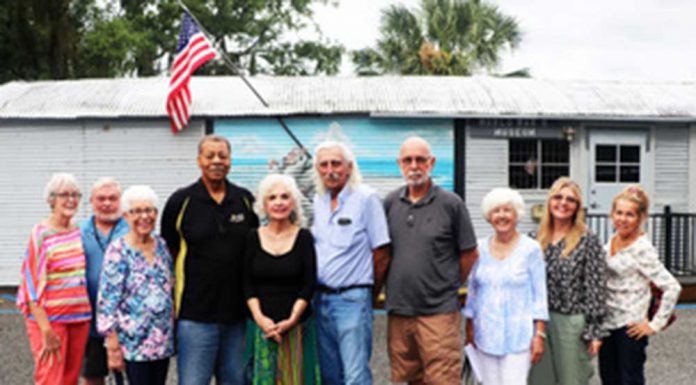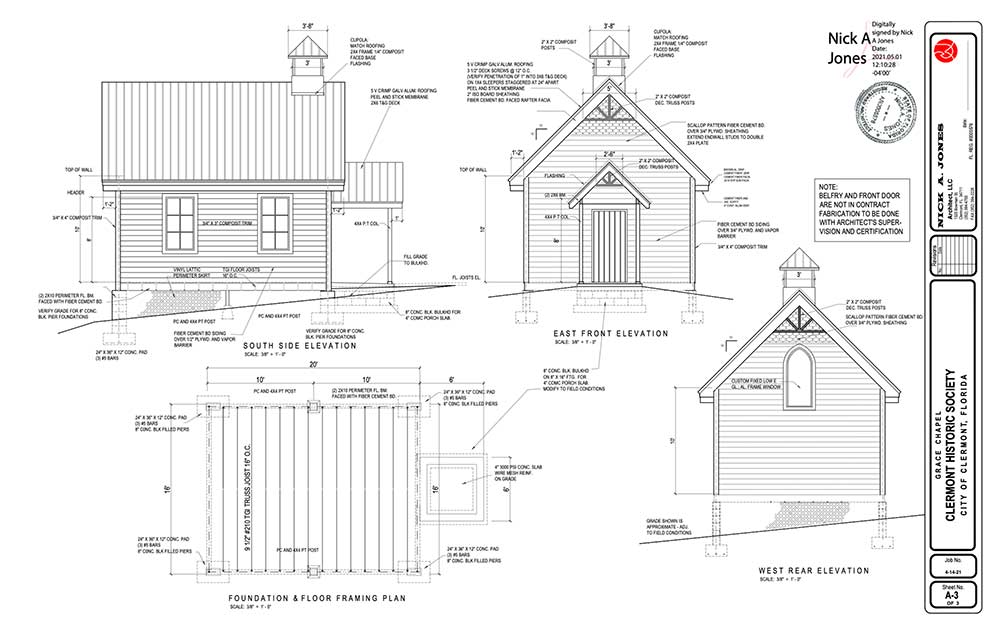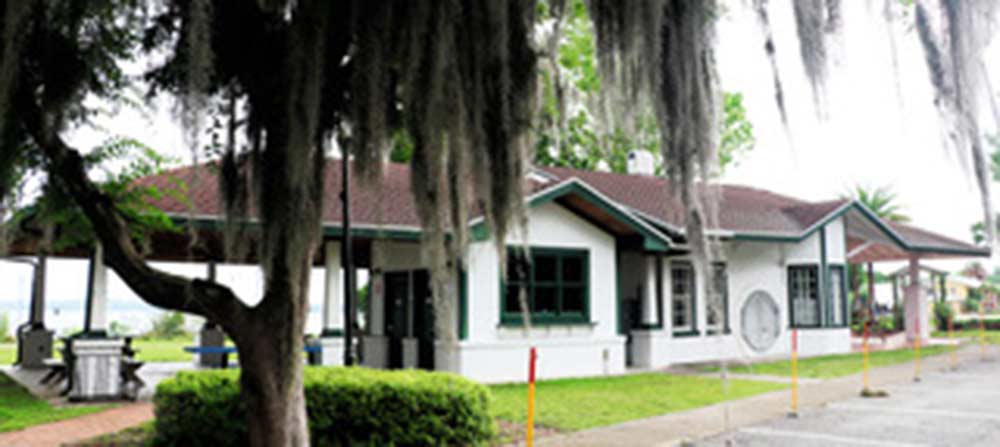Article and Pictures by Larry Oskin
Located on the beautiful shores of Lake Minneola, the Clermont Historic Village has long been a special gem with plenty of exciting memories and a rich local history to share for every new generation.
Led by positive support from Clermont Mayor Tim Murry, the City Council recently approved the Grace Chapel, which will be a welcome new addition to the Clermont Historic Village.
This will be a replica of the original Grace Chapel that once was in Clermont. This Historic Village addition should prove to be another great reason to visit downtown and to love living in Clermont.

“The Grace Chapel will be non-denominational, welcoming to all religions”, notes Historical Society Board Member Micki Blackburn. “It will be a place to seek serenity and calmness for everyone. Of course, we will welcome small weddings, anniversaries and other celebrations of life by any group regardless of role or religious creed”. She describes the building as a chapel and not a Church and enthusiastically states, “This has been a dream of mine for over 8 years!”
James Briggs, president of the Clermont Historical Society, created the original conceptual drawings for the Grace Chapel. He planned for the Grace Chapel, waiting patiently for the right time to move forward.

Architect Nick Jones notes, “Just like old times around 1880 when settlers were first finding their way to settle in Clermont, our little Grace Chapel replica will not have amenities such as plumbing, air conditioning or electricity, but it will have charm. It will set a non-denominal spiritual tone, enough to encourage its use for special life-cycle events or even to offer a lost soul a quiet little place to find some inner peace.
The Grace Chapel will be a single room. The exterior dimensions will only take up 16’ x 20’. To replicate the old Clermont Chapel, interior walls call for a board and batten pattern with little more detailing on the end wall facing the entry. The main feature of the Grace Chapel would be an arched opening for leaded glass with the sill 8’ above the floor. The high exposed beam and plank ceiling allows for a large window opening. ”
The feature wall will accommodate Micki Nagel’s beautiful lead-glass antique from her beach cottage. Side windows called for are black metal casements. Oak flooring completes the all-wood interior giving it some sense of the sacred. The entry porch will have a concrete ramp coming up from the existing paved Memory Circle. As the architect, Nick Jones has suggested Larry Rescoe and James Briggs fabricate the main entry door and bell tower. With the skyrocketing price increases on building materials, Jones also recommends getting assistance from the City of Clermont with their expertise in procurement as well as to have a construction manager hired for a set fee to oversee the coordination of subcontractors and suppliers.
The mission of the Clermont Historical Society has always been to preserve and share the history of the pioneering families of South Lake County, especially the city of Clermont. The Clermont Historic Village helps you walk back through time from the late 1800’s to the end of World War II. This property continues to uphold the dreams of the original members to have a Historic Village where people can learn about the local area lifestyle of times gone by.
Clermont Historic Village is a very unique collection of buildings from Clermont’s past, while each one is filled with fabulous antiquities and memorabilia. Clermont’s Railroad Depot was built about 1925. The Quonset Hut is a World War II Museum. The Herring Hooks Schoolhouse is a replica of an old Clermont one-room school built in 1881. The Townsend House was built in 1895 by James and Sallie Townsend, the first black residents to settle in Clermont. The Kern House was built in 1885. The Cooper Memorial Library was built in 1914. There’s even a replica of an old outhouse. The Clermont Historic Village offers unique souvenirs in their gift shop and a Little Free Library book-sharing exchange. You can host small special events at their Train Depot and pavilion.
The Clermont Historic Village is a unique partnership between the City of Clermont and the Clermont Historical Society. The City of Clermont owns and maintains the beautiful grounds and the buildings. The Historical Society owns all the furnishings and artifacts within the buildings. They are responsible for maintaining the interiors and for making the Village available to the public.
Sponsorship Funding Needed: This important replica chapel building project will need the funds donated to turn this dream into a reality. The Clermont Historic Village has been developed and maintained by the City of Clermont and the Clermont Historical Society. Founded in 1998 as the South Lake County Historical Society, the Society is a 501-C3 organization. (For additional information, visit CHS AMENDMENT APPROVED)
The Clermont Historic Village is located at 490 West Avenue, right next to Victory Pointe on Lake Minneola near Downtown Clermont. The Village is open every Saturday and Sunday from 1 to 4 pm. Group and individual tours can be arranged during non-scheduled hours upon request. Admission during regularly scheduled hours is free. A donation of only $5 per person over 12 is requested.
Membership dues are a tax-deductible donation of only $25 per year. A Lifetime Membership is $500. For more information, email the Village Manager at: slhistoricalsociety@gmail.com, call 352-242-7734 or visit www.clermonthistoricvillage.org.
You can also follow their updates on Facebook at: https://www.facebook.com/ClermontVillage.








